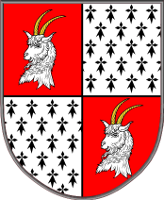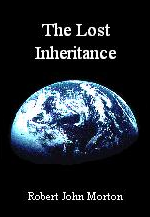Wealth can only be created by applying human labour to terrestrial resources. All can labour. Only a few, however, have the freedom to apply their labour to the resources of the planet. This is because only a few own, and thereby control, the resources of the Earth.
Terrestrial resources are, in effect, land and what is on it, under it and above it. Those who have the power to create wealth are therefore the owners of the land. Those who do not own land have no means of creating wealth. So a man without land can gain his needs of life only by the leave of one who has land. And only then if the one with the land is willing to hire the labour of the one without land in exchange for his needs of life.
Consequently, there are only two classes of people within a social hierarchy: the landed and the landless. Of course, economists and others sub-divide social classes into a whole labyrinth of sub-classes. Nevertheless, only these two main classes are fundamentally significant. The landed have wealth and the resources to produce more of it. The landless do not have the means to create wealth and therefore have none.
But why do some have land and others not? Why do few have land and the vast majority not? In the dawn of history, when there were yet few upon this planet, land was free and plentiful. Each could wander and take whatever lay or grew upon it. So how did The Landed get landed and how did The Landless get dispossessed?
 Somebody becomes abnormally greedy. He wants to have greater wealth than he can create by applying only his own labour to the land. So rather than develop his productive skills, he decides to develop his skills of combat. He becomes a warrior. Rather than cooperate with his fellows, he competes against them. He hones his skills of combat and becomes a champion. Few are able to challenge him. Most fear him. Others, of dubious morality, look up to him and join him as his band of local thugs. He and his band forcibly take their needs of life, in generous measure, from the labouring majority. Later, he encloses the land that the majority use to produce their needs of life and deems himself its owner. He thus becomes a landed nobleman.
Somebody becomes abnormally greedy. He wants to have greater wealth than he can create by applying only his own labour to the land. So rather than develop his productive skills, he decides to develop his skills of combat. He becomes a warrior. Rather than cooperate with his fellows, he competes against them. He hones his skills of combat and becomes a champion. Few are able to challenge him. Most fear him. Others, of dubious morality, look up to him and join him as his band of local thugs. He and his band forcibly take their needs of life, in generous measure, from the labouring majority. Later, he encloses the land that the majority use to produce their needs of life and deems himself its owner. He thus becomes a landed nobleman.
Now, the majority can apply their labour to his land only by his leave. They become his serfs. They must work for him as hard as he demands in return for the minimum their bodies need in order to continue working. If he ceases to need the labour of any, he ejects them onto the highways and by-ways to survive as best they can. This is how human society becomes divided into hierarchical classes. It is, simply and crudely, division by combat. The winner takes all and the loser serves the winner.
Once established, this class division becomes entrenched in formal tradition. The nobleman's son is schooled in his father's skills and consequently becomes the next champion. With time, however, the noble line becomes extremely wealthy. So the nobleman himself expediently delegates the risk and toil of combat to others whom he is well able to pay in good measure for their services. Now having the means to enforce them, the nobleman makes rules by which he requires others to behave. Thereby emerges a system of law. This law includes edicts about how his wealth shall be passed on when he dies. To keep his estate intact, he passes all to his eldest son, who does the same for his eldest son. And so on down the generations, a single thin family line inherits the land forever.
As serfs become subject to nobles, so nobles become subject to kings. The laws of the nobles become aligned and rationalised to form the law of the land. In time, however, the king becomes merely an executive of the collective will of the nobles. The king dare not upset the nobles and thus becomes subject to their consensus.
People invent. Science and technology advance. The industrial age arrives. The nobles deploy their terrestrial resources and become industrialists. The common people become more educated. They begin to think. They demand democracy. So the king is sidelined. He is replaced by the Democratic State. Through this, the nobles delude the masses into thinking they, the people, have control. But the nobles shape public opinion to their own ends. It is the landed few who are still in control. The State dare not upset the nobles, so it remains subject to their consensus.
Society thus still comprises two classes of people: the landed and the landless. Those who have and work not and those who work and have not. Those who have not are vastly more numerous than those who have. United and with growing knowledge, the subservient many could rapidly become too powerful for the noble few to contain. Consequently, in order to sustain their rulership over them, those who have must find some way to divide and partition those who have not.
Parent Document | © March 2011, Robert John Morton

 Somebody becomes abnormally greedy. He wants to have greater wealth than he can create by applying only his own labour to the land. So rather than develop his productive skills, he decides to develop his skills of combat. He becomes a warrior. Rather than cooperate with his fellows, he competes against them. He hones his skills of combat and becomes a champion. Few are able to challenge him. Most fear him. Others, of dubious morality, look up to him and join him as his band of local thugs. He and his band forcibly take their needs of life, in generous measure, from the labouring majority. Later, he encloses the land that the majority use to produce their needs of life and deems himself its owner. He thus becomes a landed nobleman.
Somebody becomes abnormally greedy. He wants to have greater wealth than he can create by applying only his own labour to the land. So rather than develop his productive skills, he decides to develop his skills of combat. He becomes a warrior. Rather than cooperate with his fellows, he competes against them. He hones his skills of combat and becomes a champion. Few are able to challenge him. Most fear him. Others, of dubious morality, look up to him and join him as his band of local thugs. He and his band forcibly take their needs of life, in generous measure, from the labouring majority. Later, he encloses the land that the majority use to produce their needs of life and deems himself its owner. He thus becomes a landed nobleman.